Why it’s important for Coaches to allocate roles that line up with an athlete’s natural strengths and style, and why getting it wrong could cost you
When you allocate a role within your team you better make sure it’s in line with your players’ natural strengths and style. If it’s not, the forced adaptations could have a costly effect on your team’s performance. What does this mean? By the end of this article you’ll know why. But first, let’s start by watching this video by Bo Hanson.
In the next seven minutes, assuming you don’t already know, you’ll learn how everybody has a preferred way of behaving but that they’re also capable of a degree of adapting their behavior or actions to suit the demands placed on them by the situation. To understand this concept and its impact on your athlete’s and team’s performance, it helps to understand why and how technical and non-technical roles are important within teams and that each individual’s unique DISC Profile drives their behavior.
When you put all this knowledge together, you’ll understand why each DISC behavioral style, gravitates towards certain roles within a team and critically, why it’s important for each person to play a role that’s in line with their natural style and not put themselves or their team under long-term stress by playing a role that’s not natural for them.
The easiest ways to understand the importance of defining roles within teams is to imagine a scenario where this doesn’t occur: imagine a game of hockey or football where there’s no difference between offence and defense, everyone’s trying to score a goal and everyone’s trying to keep the ball out of their home goal. Does that remind you of watching a game of under 8’s? Imagine the same was to occur in a non-technical sense; what if everyone gave directions and developed their own strategies? What if no one accepted the leadership role, no one was responsible for reminding players of set plays, no one encouraged, nurtured or rallied the rest of the team in moments of disorganization or temporary defeat? The team would struggle for on field direction, lack motivation and the culture would deteriorate into an individual style culture and team members wouldn’t care for each other.
You can see why technical and non-technical roles matter. Appropriate role differentiation within a team is essential to success.
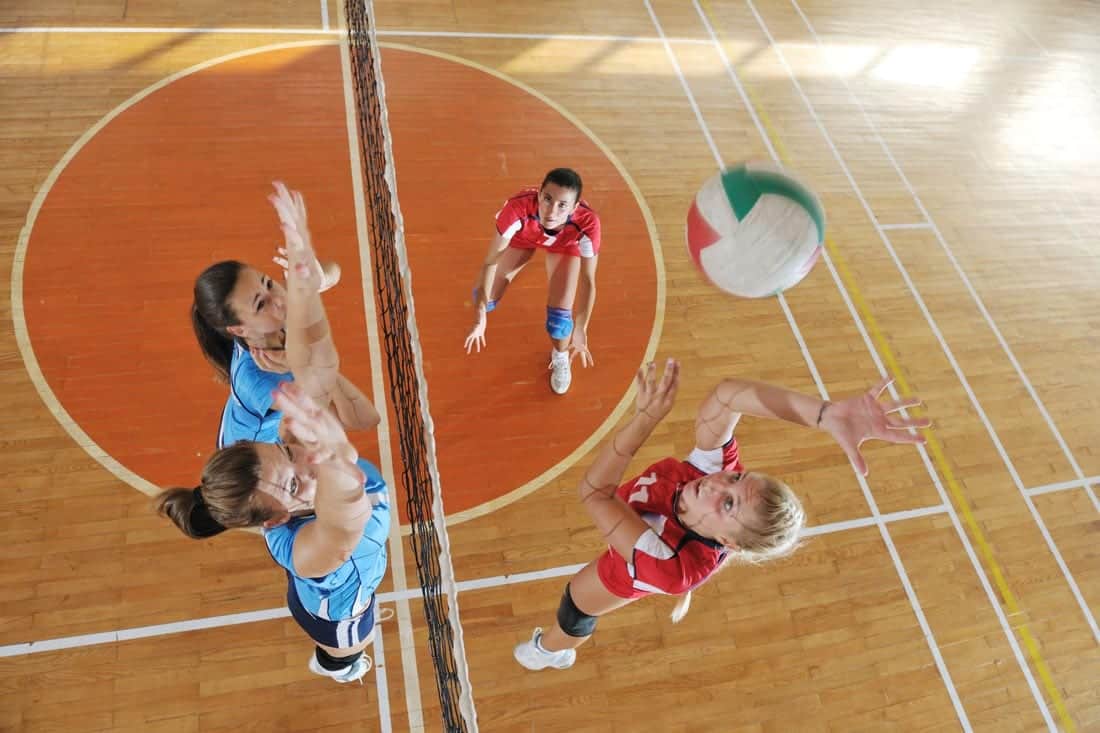
Bo Hanson, Senior Consultant for Athlete Assessments, says, “in addition to the existence of differentiated roles within a team, it’s critical that athletes understand why they’ve been allocated this role and the way that it and they contribute to the team in a technical and non-technical capacity”.
“Ultimately, strong role clarification is a sign of an effective team”.
“Win, lose or draw, a team is responsible for its results as a whole, but within the team, each player also has an individual role to play in carrying out the team’s strategy on game day”.
Hanson explains that people find some roles easier to carry out than others. This is a consequence of the way we’re all made up given our unique behavioral preferences and they arrive at solutions in their own way. He says, “it’s one of the things that I learned to really enjoy about playing sport in teams, now I seek out different behavioral styles when compiling teams for anything I do. That difference in process and approach is vital for high-performance, incorporating different ideas, brings better outcomes every time”.
“Successful Coaches make the most of their athlete’s style, blending the mix within that particular grouping to become a team”.
Each Coach then must understand their athletes; what they’re working on, what motivates them and what gives them security. DISC Profiling can shortcut this process. Knowing each player’s Profile and how they are likely to behave in certain situations can help allocate roles within a team.
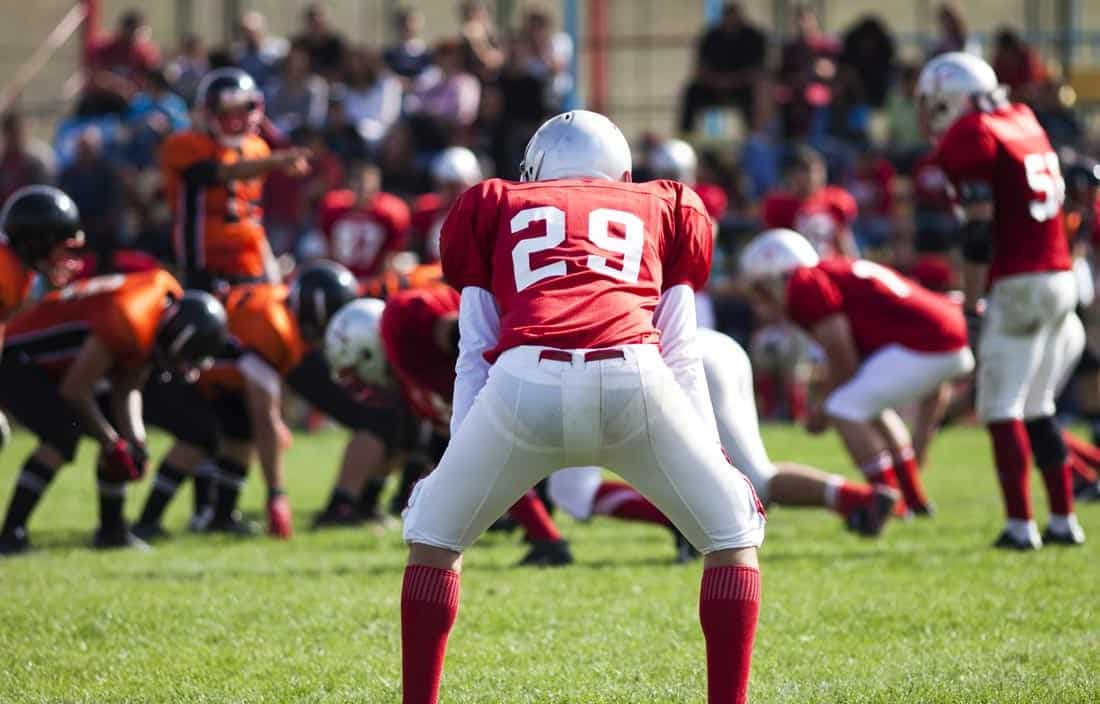
Short of knowing each athlete’s DISC Profile, which is ideal because it allows the athlete to develop self-awareness and the Coach to quickly build relationships with each individual player, a Coach or an administrator can identify basic behavioral traits, and decide which profile each player is within the sporting arena and consequently, how they might behave and what roles might suit them.
While this process doesn’t give the detail and accuracy of an individual profile, it’s a rudimentary beginning.
An important distinction between behavior and personality and DISC is a behavioral tool not a personality tool, is that behavior is flexible, we can change it, we can comfortably and consciously choose between a range of options that are available to us, whereas personality is much less moldable. (Note, Athlete Assessments has the only DISC Profiles completely tailored for sport.)
Fundamentally, DISC identifies four main styles of behavior,
Dominant (D): the person is faster-paced (movement, talking, deciding) more direct (to the point), task/goal -orientated (want to win) and personally more guarded (do not disclose personal information readily)
Influencer (I): the person is faster-paced (movement, talking, deciding), more direct (to the point), people -orientated (seek out and enjoy the company of others) and personally more open (disclose personal information readily)
Steadiness (S): the person is slower-paced (slower to move, talk and respond), more indirect (take time to get to the point and gives detailed information), relationship -orientated (want to get to know you) and personally more open (will disclose personal information)
Conscientious (C): the person is slower-paced (slower to move, talk and respond), more indirect (take time to get to the point and gives detailed information), task/goal -orientated (wants to do things the right way first time) and personally more guarded (do not disclose personal information readily)

People can have one prominent preferred behavioral style or a combination of styles and importantly they may behave in a different manner under pressure, leading the DISC system to decide that they have a certain natural style and a certain adapted style.
It is this distinction between natural and adapted style that’s extremely important to high-performance. Hanson says, “DISC is the only tool which even discusses Natural and Adapted styles. This is because DISC is a behavioral tool. Central to DISC is the core belief that people either momentarily or long-term, sustain different behaviors, depending on the environment they find themselves in or must perform in. Natural style is the equivalent of being right or left handed. It’s about the behaviors we don’t need to think about. Adapted style is the changes we make to our Natural style in our best efforts to “fit” into a given environment. Depending on the degree of “fit”, we find we are more or less comfortable, or effective.”
It’s this level of adaptation that interests us when allocating both technical and non-technical roles in the team. Bearing in mind that no style or profile is better than another, they’re just different. In terms of non-technical roles; some people are suited to caring for others in the team, and there will be athletes who are suited to directing, building relationships, planning organizing, teaching or mentoring.
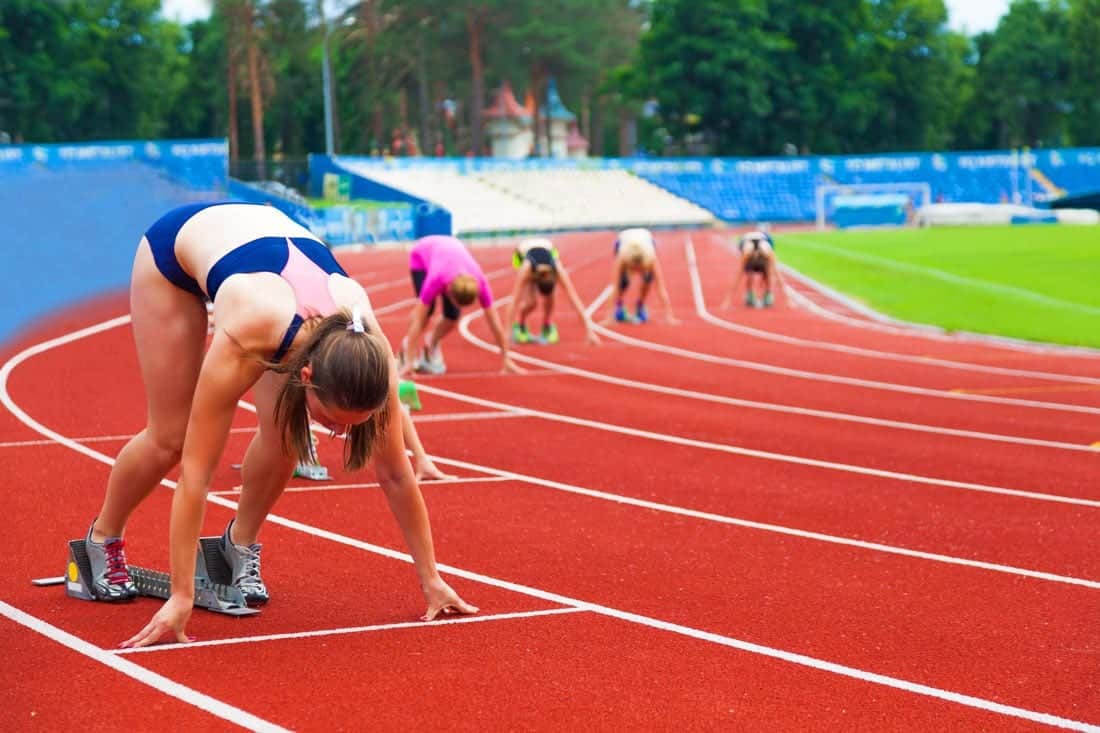
Hanson explains that roles are essential for any team. He says, “teams only function effectively when each individual performs their own unique role which suits how they most prefer to behave. Certain roles must be performed such as thinking roles, relationship roles and action roles. Each role suits different DISC Styles. The key is to allocate and guide athletes into roles they are most suited for”.
To explain the mechanics of role allocation and behavioral style, Hanson cites an example from rowing; every rowing crew relies on one person to give direction in racing and in training. They do the talking, they direct the technical focus, deliver the team tactics, boost morale, encourage each individual when necessary and ultimately, they drive the race.
In a Coxless Four, this role falls to the two seat, primarily because of geographical seating position. But if the athlete in the two seat is not comfortable giving direction and talking, they have trouble performing their role and maintaining the technical standard expected to move the boat.
Hanson explains the reason for this, “it’s due to the fact that non- natural behaviors (we all have them), take more effort and energy to perform. In the highest level of sport, there is enormous mental energy dedicated to performing at a pinnacle level. It leaves little capacity for behaving in ways which are not well practiced and ultimately, more natural.”
This difference between natural and adapted styles is important and individualized DISC Profiles provide a Coach and their athletes with a quick insight into their natural and adapted style, sometimes the distinction is obvious, sometimes it’s not.
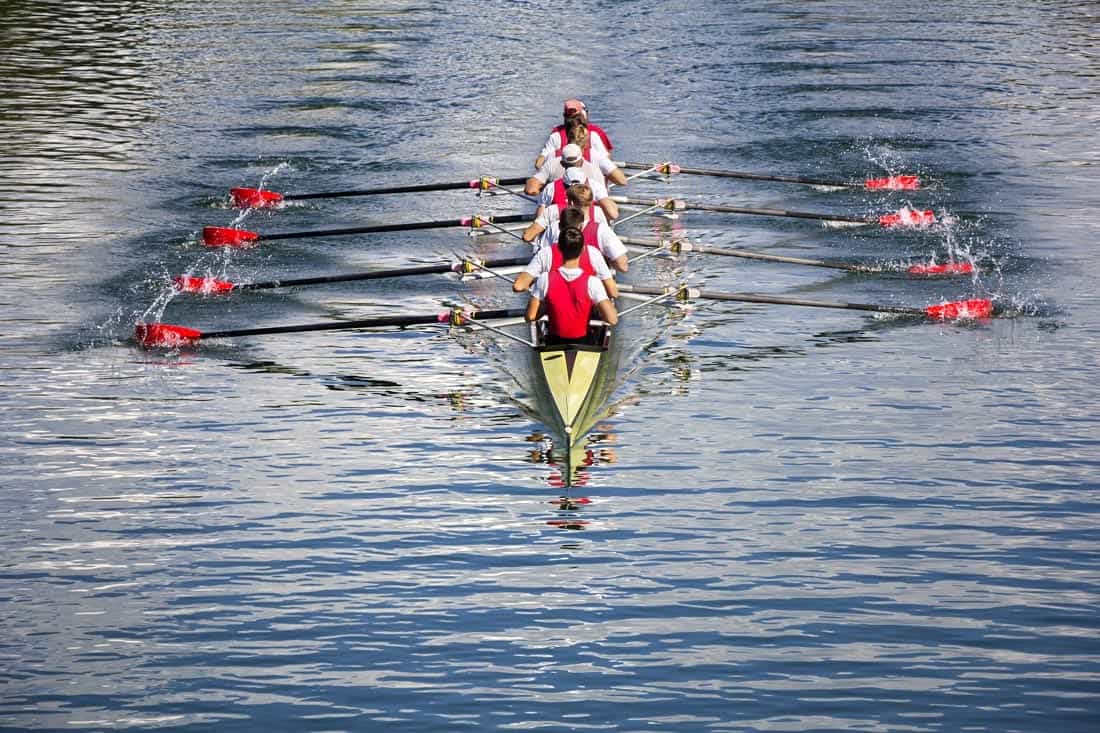
The profile affords both Coach and athlete the luxury of preplanning in addition to learning from real-life experiences in both wins and losses.
Athlete Assessments provide DISC Profiles for individual athletes, Coaches and sports administrators. Each individual undertakes a 10-12-minute online survey and the resulting report provides a detailed analysis of the individual’s natural and adapted style.
A DISC Profile will also provide an insight into the finer details of personality, behavior and motivation. The Profile is a head start on self-awareness, the basic building block of better teams.
Where to from here…
At Athlete Assessments, we’re experts in the people side of sport. We know sport and live high-performance every day. Our reputation and proven success at the elite level speaks for itself. The results that our National, Olympic, Professional and Collegiate team clients achieve directly reflects their focus on getting the people side right.
Athlete Assessments’ Team Programs have been specifically designed to maximize the people side of your team.
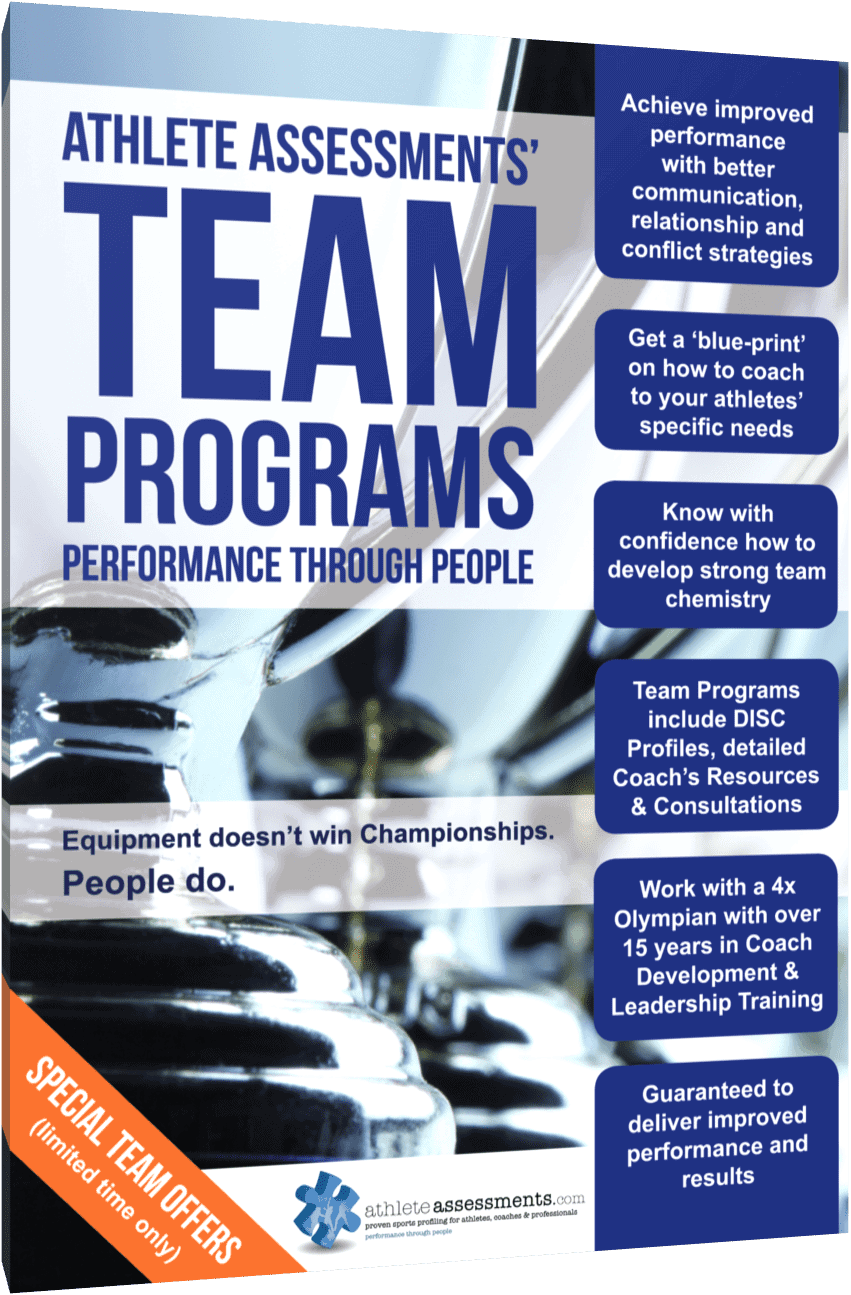 Achieve improved performance with better communication, relationship and conflict strategies
Achieve improved performance with better communication, relationship and conflict strategies- Get a ‘blue-print’ on how to coach to your athletes’ specific needs
- Know with confidence how to develop strong team chemistry
- Team Programs include DISC Profiles, detailed Coach’s Resources & Consultations
- Work with a 4x Olympian with over 20 years in Coach Development & Leadership Training
- Guaranteed to deliver improved performance and results
At Athlete Assessments we’re here to provide you with excellence in service and to help you be your best. If there is anything we can do to be of service, don’t hesitate to contact us.


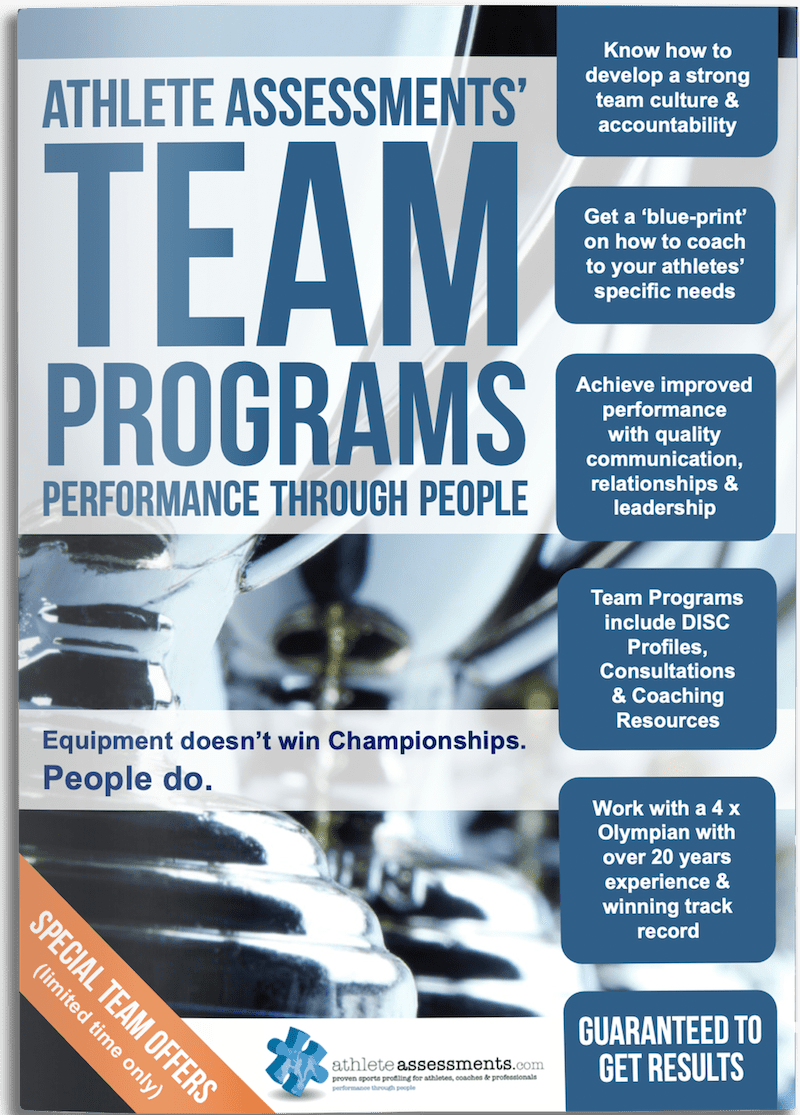




1 thought on “How to Harness Your Athlete’s Natural Strengths”
Mim Haigh, thanks for the article post.Really thank you! Great.